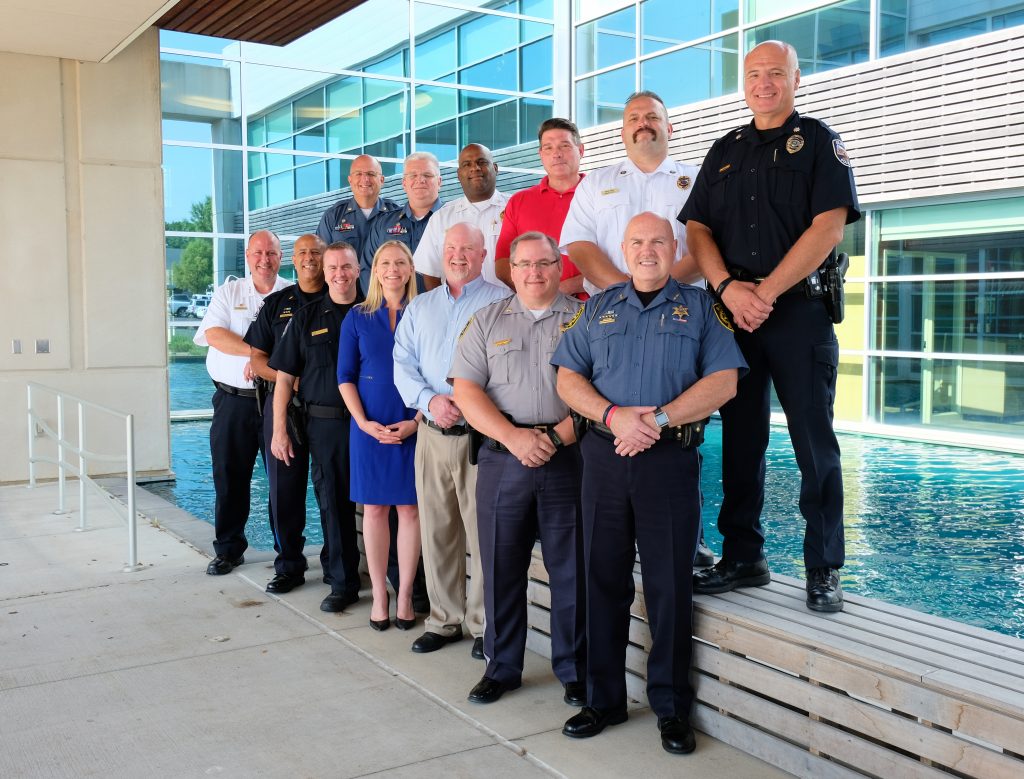A typical, quiet summer day in a small town in rural Kansas was recently shattered by gunfire when a suspect fleeing from police fired at the officers who were pursuing him. The officers returned fire, and the suspect was shot. No lives were lost, but the event still shook the community to its core. “This kind of thing simply does not happen here,” the police chief said.
Unfortunately, the effects of an incident like this continue to linger long after the suspect is in custody and the officers from the multiple agencies that responded are back on patrol.
After several days of dealing with the media, investigators, attorneys, and city officials, the police chief in this case was mentally and physically exhausted. He made all the proper notifications and completed the paperwork, but kept running the scenario through his head. Were his department’s policies and procedures adequate? Had he done everything he could? He felt responsible for the trauma his officers experienced in the face of gunfire and worried about their families. He worried about the suspect’s family. He worried about his own family, knowing that this shooting made them realize that someday he might not make it home after his shift. He began to have trouble sleeping, and his sense of guilt made him spend more and more time at work, where he isolated himself with paperwork.
As a leader, he did a great job of supporting his employees, but he had nowhere to turn for support for himself. His small department did not have access to a formal support program. He didn’t want anyone on his staff to know he was wrestling with these issues, and he wouldn’t even consider seeking help from a therapist in the community—in the law enforcement culture, that is unfortunately often seen as a sign of weakness.
However, there is now another solution for this chief and others like him: a new peer support program specifically tailored for command staff.
In July 2018, the Mid-America Regional Council (MARC) launched a Command Staff Peer Support pilot program. As the nonprofit association of city and county governments for the Kansas City region, MARC has managed the region’s 911 system since the early 1980s and coordinated regional homeland security efforts since 2003, meaning the necessary relationships, collaborative spirit, and sense of trust the program needs to succeed were already in place.

With guidance and support from MARC’s Regional Homeland Security Coordinating Committee, emergency services agencies across the region are working together to advance the region’s ability to respond and recover from intentional attacks that result in casualties and fatalities—potentially among both civilians and responders. One goal of this work is to strengthen the capacity to help those who are affected by these incidents, including survivors, families, responding agency personnel, and the community as a whole.
From recent line-of-duty deaths and injuries experienced by local agencies to lessons learned from attacks in other areas, there is a heightened awareness of the toll these types of incidents take on all involved, including command staff. The idea of building a regional capability around command staff peer support training resonated with leaders in fire, law enforcement, and emergency medical services.
“We know the responsibilities a commander faces during a large-scale event can be excruciating,” said Erin Lynch, MARC’s emergency services program director. “If we can provide training and tools to help commanders in events such as officer-involved shootings and line-of-duty deaths, they will be in a much stronger position to respond to large-scale, complex incidents.”1
The pilot program is testing the feasibility and functionality of a command-level peer support program. A 12-person group consisting of senior-level police, fire, and EMS staff, along with their union and Fraternal Order of Police presidents, worked with Dr. Jennifer Prohaska to customize training that addresses the unique challenges and stressors faced by command-level first responders. Her work has involved both the design of the training and guidance on its effectiveness.
“The feedback from participants in this initial training cadre has been powerful,” said Lynch. “Having a systematic way to provide command-level peer support to one another upon request increases the collective resiliency of our emergency services community.”
Prohaska, a licensed clinical psychologist specializing in first responders, has years of experience helping individuals and response professionals cope with trauma. “It’s a common misperception that once men and women take on more administrative roles and leave the field, they become immune to major traumatic stress, and that simply isn’t true,” said Prohaska. “By the time commanders reach that point in their careers, they could have 20-plus years of accumulated stress and trauma from working on the front lines, plus the added burden of chronic stress that comes with command responsibilities.”
Training modules in the pilot program cover tools for dealing with command stress, PTSD in first responders, suicide risk and assessment, resilience among command-level first responders, practical applications of knowledge, and critical incident stress debriefing scenarios. International Association of Chiefs of Police (IACP) guidelines and state-level peer support legislation are also incorporated.
After completing their training, the pilot program’s first 12 participants formed the Command Level Peer Support Team, a roving team that stands ready to respond, both to formally scheduled critical incident stress debriefings (CISDs) and to provide individual assistance to commanders in times of crisis. Since the group’s inception in July 2018, members have already been asked to deploy six times to incidents involving suicide, officer-involved shootings, and death within their own agencies and others inside and outside the nine-county MARC region.
The Command Level Peer Support Team is modeled after a successful 911 Peer Support Team for dispatchers. “Dispatching is and always has been a stressful job,” said Pam Opoka, peer support program planner at MARC. “But as we implement Next Generation 911, dispatchers won’t just be hearing traumatic events take place through their headsets. They’ll also be seeing these events unfold through photos and video. We expect that may have a much greater impact on their mental well-being.” Since its formation in January 2018, the 911 Peer Support Team has deployed 23 times to support fellow dispatchers by attending CISDs.
The peer support teams fill a niche that cannot be filled by typical employee assistance programs (EAPs), or department psychologists or chaplains. “Peer support can be immediate, right after a call or even while still on the scene of an incident,” said Opoka. “Peers do the same job, and often understand each other’s stress in ways someone on the outside cannot.” Peer support training augments other parts of an overall mental wellness program within an agency, but it is not intended to replace professional help. The peer support program is proactive and preventive in nature, helping to identify problems immediately after an incident, before serious trouble develops. Peer support team members are trained to provide accessible, practical, and de-stigmatized support to personnel during times of work-related and personal crisis.
“Our goal is that commanders will not feel like the police chief in the beginning of this story,” said Eric Winebrenner, MARC’s public safety communications program director. “We want them to know they have a team of their own to reach out to in times of need, across jurisdictions, and across first responder disciplines. Healthy commanders make healthy agencies.”
The Command Level Peer Support Team and 911 Peer Support Team are both involved in a national-level research study to measure the efficacy of peer support programs, and the data they provide will be used to help shape programs in the future.
“This training helped me realize that I am not the only one who has experienced these types of feelings,” said Morris Letcher, a battalion chief with the Kansas City, Kansas, Fire Department, one of the first 12 commanders to be trained in the program “The Command Level Peer Support Training is a valuable tool to help encourage others to speak about their feelings and the possible side effects that we may have due to our profession.”
“Command Peer Support training was amazing,” said Major Wade Lanphear, Olathe, Kansas, Police Department. “The content was appropriate to our roles and covered relevant, real-world issues. The role-playing sessions were challenging because although they were ‘made up’ scenarios, they were very real to all of us. Those segments, along with the group discussion, enhanced our perspectives and built lifelong bonds between all of us. After completing the training, I feel equipped to respond and provide support to my peers in need.”
The Kansas City region is now reviewing the results of the pilot training and discussing how the peer support training for command staff might become an ongoing resource for local agencies. There are currently 26 commanders on a waiting list for the next training.🛡
A version of this article directed toward EMS personnel was published in the December 2018 EMS World.
Note:
1 All quotes in this article were taken from personal interviews conducted in August 2018.
Please cite as
Pam Opoka, “Healthy Commanders Make Healthy Agencies,” Police Chief online, January 16, 2019.



